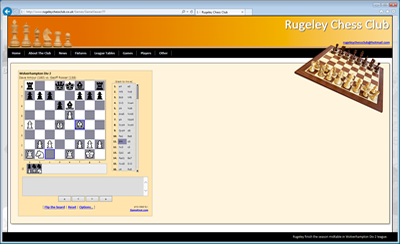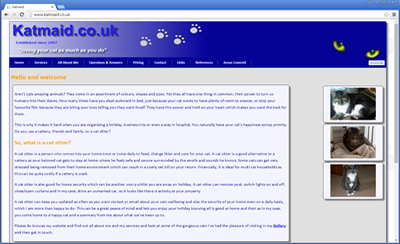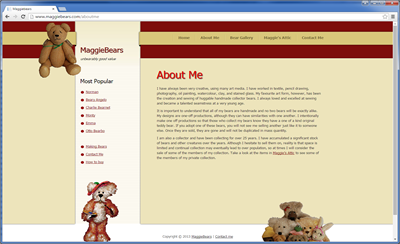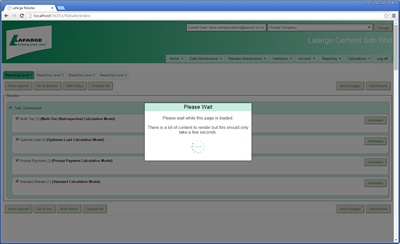Collection Classes in .net - the ArrayList
This is the second part of an article on collection classes in .net with C#. This part covers the ArrayList.
For the first part see http://www.audacs.co.uk/ViewPage.aspx?PageID=512
For the next part on Generic Lists see http://www.audacs.co.uk/ViewPage.aspx?PageID=514
Ok so on to the ArrayList. ArrayList is a class found at System.ArrayList. It implements the following interfaces:
IList, ICollection, IEnumerable, ICloneable
It is a collection which works a bit like an array but it's size can grow and shrink as required. Items can be added and removed easily using Add and Remove methods.
The ArrayList holds objects - ie instances of System.Object. That way we can have an ArrayList which contains any class at all since all classes ultimatley inherit from Object. It does also allow us to mix objects within the collection although that is not normally thought of as being the reason for designing the class this way.
So lets have a look at an example program.
using System;
using System.Collections;
using System.Collections.Generic;
using System.Linq;
using System.Text;
namespace ArrayLists
{
public class Program
{
static void Main(string[] args)
{
//Create a new instance of an ArrayList
ArrayList things = new ArrayList();
//Create and populate some instances of the Person class
Person dave = new Person("Dave Amour", 42);
Person tracey = new Person("Tracey Amour", 36);
Person sarah = new Person("Sarah Bloggs", 23);
Person fred = new Person("Fred Smith", 27);
Person bill = new Person("Bill Brown", 46);
//Add all of the Person instances into the ArrayList
things.Add(dave);
things.Add(tracey);
things.Add(sarah);
things.Add(fred);
things.Add(bill);
//Iterate over the items in the collection and output details to screen
for (int i = 0; i < things.Count; i++)
{
Console.WriteLine(((Person)things[i]).Name + " (aged " + ((Person)things[i]).Age.ToString() + ")");
}
//Writes a blank line for readability
Console.WriteLine();
//Remove fred
things.Remove(fred);
//Output that we have removed fred
Console.WriteLine("Removed fred" +Environment.NewLine);
//Iterate over the items in the collection and output details to screen
for (int i = 0; i < things.Count; i++)
{
Console.WriteLine(((Person)things[i]).Name + " (aged " + ((Person)things[i]).Age.ToString() + ")");
}
//Writes a blank line for readability
Console.WriteLine();
//Remove the item at position 0
things.RemoveAt(0);
//Output that we have removed the 1st item
Console.WriteLine("Removed 1st item" + Environment.NewLine);
//Iterate over the items in the collection and output details to screen
for (int i = 0; i < things.Count; i++)
{
Console.WriteLine(((Person)things[i]).Name + " (aged " + ((Person)things[i]).Age.ToString() + ")");
}
//Remove items in the range 1..2
things.RemoveRange(1, 2);
//Writes a blank line for readability
Console.WriteLine();
//Output that we have removed items in the range 1..2
Console.WriteLine("Removed range 1-2" + Environment.NewLine);
//Iterate over the items in the collection and output details to screen
for (int i = 0; i < things.Count; i++)
{
Console.WriteLine(((Person)things[i]).Name + " (aged " + ((Person)things[i]).Age.ToString() + ")");
}
//Stops the console window from closing
Console.Read();
}
}
///<summary>
/// Test Person class to be added to the ArrayList for testing
///</summary>
public class Person
{
//Constructor
public Person(string name, int age)
{
Name = name;
Age = age;
}
//The persons name
public string Name
{
get;
set;
}
//The persons age
public int Age
{
get;
set;
}
}
}
This program utilises a few instances of a Person class which just contains a name and age. We create an ArrayList and add some objects to it. We then output these to screen. We then do some removing in various ways and output more results to screen.
So from this you can see that the ArrayList is very easy and convenient to work with.
The only real downside is that becuase it contains a collection of objects then you need to cast to your specific object to do anything useful. That is why we have the following code which casts the objects to a Person class.
//Iterate over the items in the collection and output details to screen
for (int i = 0; i < things.Count; i++)
{
Console.WriteLine(((Person)things[i]).Name + " (aged " + ((Person)things[i]).Age.ToString() + ")");
}
We could have used a foreach statement instead which would have done the casting for us - eg:
foreach (Person p in things)
{
Console.WriteLine(p.Name + " (aged " + p.Age.ToString() + ")");
}
However casting is still being done and this can lead to problems. Suppose one of the objects in our ArrayList isn't of the type expected? In that case then we could get a runtime error. The solution to this problem lies with Generics and Generic Lists which we will look at later and really ArrayLists shouldn't be used anymore as a Generic List is preferable. You do however need to be familliar with ArrayLists for historical purposes and legacy apps and code.
Other instance method worth being aware of include:
- Clear
- Clone
- Contains
- CopyTo
- Sort
- Reverse
- ToArray
And there are a few others too but given the obselessence of the ArrayList that should be enough for us to be aware of.
For the next part on Generic Lists see http://www.audacs.co.uk/ViewPage.aspx?PageID=514

















